Pope: “The witness of the elderly is an authentic gift and a blessing for children”
General Audience: Catechesis on Old Age
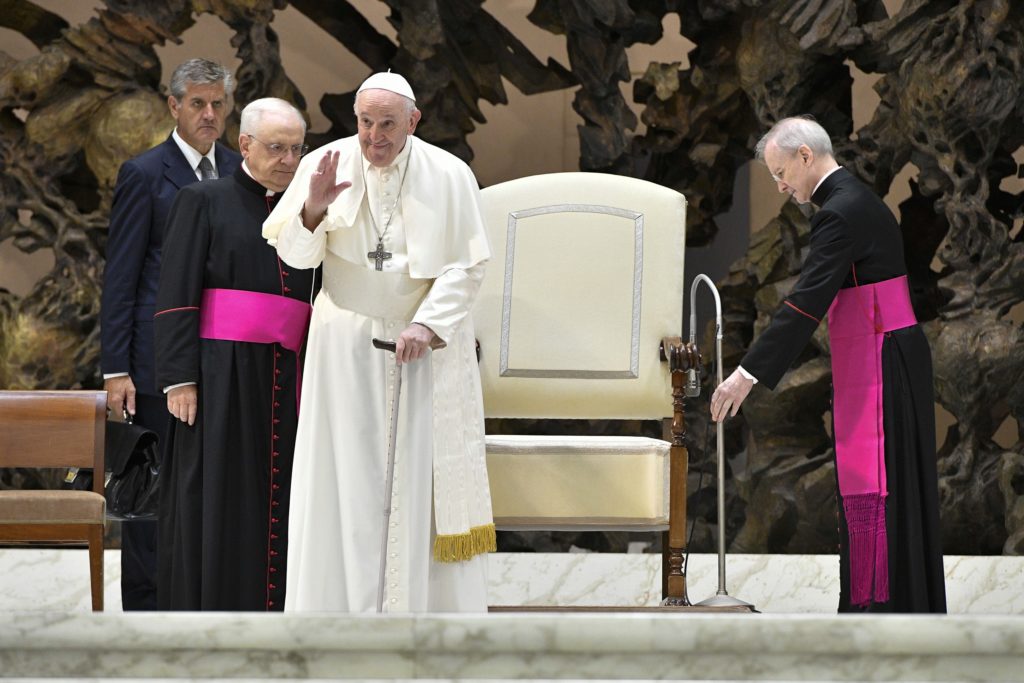
This morning’s general audience takes place at 9:00 a.m. in the Paul VI Hall.
In his address in Italian, the Pope, continuing his catechesis on old age, focuses his meditation on the theme: The “Ancient of Days”. Old age reaffirms the destiny of life, which no longer dies. (Reading: Dn 7,9-10).
After summarising his catechesis in the different languages, the Holy Father addressed special expressions of greeting to the faithful present.
The General Audience concludes with the recitation of the Pater Noster and the Apostolic Blessing.
Catechesis on Old Age – 17. The “Ancient of days”. Old age is a reassurance regarding the destination to a life that never dies again
Dear brothers and sisters, good morning!
The words we heard of Daniel’s dream evoke a mysterious, and at the same time, glorious, vision of God. This vision is picked up at the beginning of the Book of Revelation in reference to the Risen Jesus, who appears to the Seer as Messiah, Priest and King, eternal, omniscient and unchanging (1:12-15). He lays his hand on the shoulder of the Seer and reassures him, “Fear not, I am the first and the last, and the living one. I died, and behold, I am alive forevermore” (vv. 17-18). Thus disappears the last barrier of fear and anguish that a theophany has always provoked. The Living One reassures us, he gives us security. He, too, died, but now occupies the place destined for him –the First and the Last place.
In this intertwining of symbols – there are many symbols here – there is an aspect that perhaps might help us better understand the connection of this theophany, this apparition of God, with the cycle of life, historical time, the lordship of God over the created world. And this aspect is specifically connected with old age. How is it connected? Let’s see.
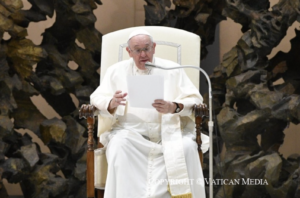
The vision communicates an impression of vigour and strength, of nobility, of beauty and charm. His clothing, his eyes, his voice, his feet – everything is glorious in this vision: it is all about a vision! His hair, however, is white – like wool, like snow – like the hair of an old man. The most widely-used biblical term indicating an old man is “zaqen”, which comes from “zaqan”, and means “beard”. Snow-white hair is an ancient symbol of a very long time, of time immemorial, of an eternal existence. We do not need to demythologize everything for children – the image of a God, who is watching over everything with snow-white hair, is not a silly symbol, it is a biblical image, it is a noble image, even a tender image. The Figure in Revelation that stands amidst the golden lampstands overlaps that of the “Ancient of days” in Daniel’s prophecy. He is as old as all of humanity, but even older. He is as ancient and new as the eternity of God. For the eternity of God is like this, ancient and new, because God surprises us with his newness, he always comes to meet us every day in a special way for us, in that moment. He is always renewing himself: God is eternal, he is from all time, we can say that there is like an old age with God, that’s not true, but he is eternal, he renews himself.
In the Eastern Churches, the Feast of the Meeting with the Lord, celebrated on 2 February, is one of the twelve great feasts of the liturgical year. This feast places emphasis on the meeting of Jesus with the old man Simeon in the Temple, it places emphasis on the meeting between humanity, represented by the watchman Simeon, and Anna, with the little Lord Christ, the eternal Son of God, made man. An extremely beautiful icon of this scene can be admired here in Rome among the mosaics in Santa Maria in Trastevere.
In the Byzantine liturgy, the Bishop prays with Simeon: “He is the child born of the Virgin. He is the Word and God of God, the One, who for our sake was incarnate and saved man.” And it continues, “The door of heaven is opened today: the eternal Word of the Father, having assumed a temporal nature, without giving up his divinity, is presented by his will in the temple under the Law by the Virgin Mary, and the watchman takes him in his arms”. These words express the profession of faith from the first four Ecumenical Councils, which are sacred for all the Churches. But Simeon’s action is also the most beautiful icon for the special vocation of old age. Looking at Simeon, we behold the most beautiful icon of old age – to present the children who come into the world as an uninterrupted gift to God, knowing that one of them is the Son generated within God’s own intimacy, before all the ages.
Old age, on its way to a world in which the love that God has infused into Creation will finally radiate without obstacles, must accomplish this gesture performed by Simeon and Anna, before taking its leave. Old age must bear witness – for me this is the core, the most central aspect of old age – old age must bear witness to children that they are a blessing. This witness consists in their initiation – beautiful and difficult – into the mystery of our destination in life that no one can annihilate, not even death. To bring the witness of faith before a child is to sow that life. To bear the witness of humanity too, and of faith, is the vocation of the elderly. To give children the reality that they have lived as a witness, to bear witness. We old people are called to this, to bear witness, so that they might bring it forward.
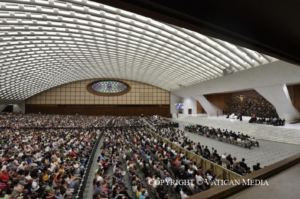
The witness of the elderly is credible to children. Young people and adults are not capable of bearing witness in such an authentic, tender, poignant way, as elderly people can. It is irresistible when an old person blesses life as it comes their way, laying aside any resentment for life as it goes away. There is no bitterness because time is passing by and he or she is about to move on. No. There is that joy of good wine, of wine that has aged well with the years. The witness of the elderly unites the generations of life, the same with the dimensions of time: past, present and future, for they are not only the memory, they are the present as well as the promise. It is painful – and harmful – to see that the ages of life are conceived of as separate worlds, in competition among themselves, each one seeking to live at the expense of the other: this is not right. Humanity is ancient, very ancient, if we consider time measured by the clock. But the Son of God, who was born of a woman, is the First and the Last for every time. This means that no one falls outside of his eternal generation, outside of his glorious might, outside of his loving proximity.
The alliance – and I am saying alliance – the alliance between the elderly and children will save the human family. There is a future where children, where young people speak with the elderly. If this dialogue does not take place between the elderly and the young, the future cannot be clearly seen. The alliance between the elderly and children will save the human family. Can we please give back to children, who need to learn to be born, the tender witness of the elderly who possess the wisdom of dying? Will this humanity, which with all its progress seems to be an adolescent born yesterday, be able to retrieve the grace of an old age that holds firmly to the horizon of our destination? Death is certainly a difficult passage from life for all of us it is a difficult passage. All of us must go there, but it is not easy. But death is also a passage that concludes the time of uncertainty and throws away the clock. This is difficult because this is the passage of death. For the beautiful part of life, which has no more deadlines, begins precisely then. But it begins from the wisdom of that man and that woman, the elderly, who are capable of bearing witness to the young. Let us think about dialogue, about the alliance between the elderly and children, of the elderly with young people, and let us do it in such a way that this bond is not broken. May the elderly have the joy of speaking, of expressing themselves with the young, and may the young seek out the elderly to receive the wisdom of life from them.
Special Greetings
I greet the English-speaking pilgrims and visitors taking part in today’s Audience. Upon you and your families, I invoke the joy and peace of our Lord Jesus Christ. God bless you!
Summary of the Holy Father’s words
Dear brothers and sisters: In our continuing catechesis on old age in the light of God’s word, we now turn to the mysterious figure of the “Ancient of Days”, presented in a vision of the prophet Daniel (Dn 7:9) and echoed in the Book of Revelation (cf. Rev 1:13-14). This image of God the Father, venerable in age and authority, expresses God’s transcendence, his eternity and his constant care for this world and its history. The figure of the “one like a son of man” is a prophecy of Jesus, the eternal Son of the Father, sent into our world for our salvation. At his Presentation in the Temple, the child Jesus was embraced by Simeon and Anna, two elderly people who recognized in him the long-awaited fulfilment of God’s promises. The presence of the aged couple speaks to us of the special vocation of the elderly: to welcome the young into our world, to celebrate their lives as a blessing and to testify to the unity of the different generations in the unfolding of God’s saving plan. The elderly play an indispensable role in helping the young to mature in wisdom, rooted in continuity with the past and looking ahead to the future of hope that God, the “Ancient of Days”, opens up before us all.
Related
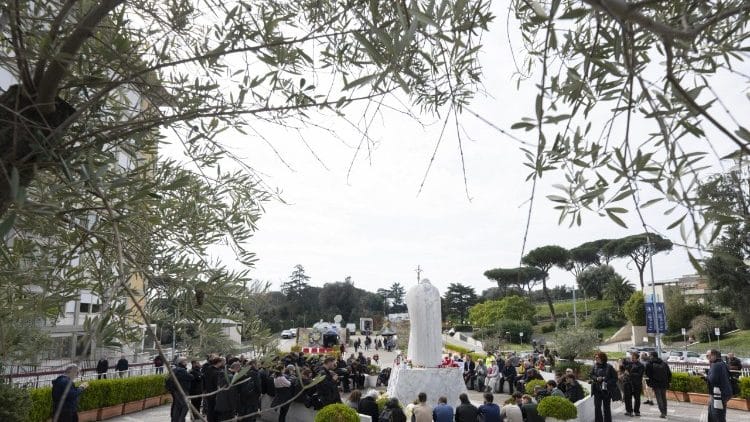
Pope at Gemelli Hospital: Peaceful Night
Exaudi Staff
12 March, 2025
1 min
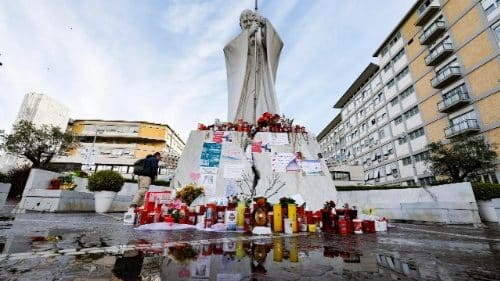
Pope Francis spent a peaceful night at the Gemelli Polyclinic
Exaudi Staff
11 March, 2025
1 min
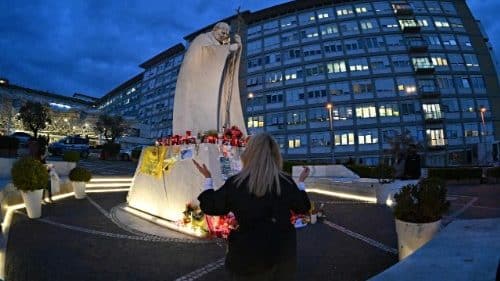
Pope Francis shows stable improvement
Exaudi Staff
10 March, 2025
1 min
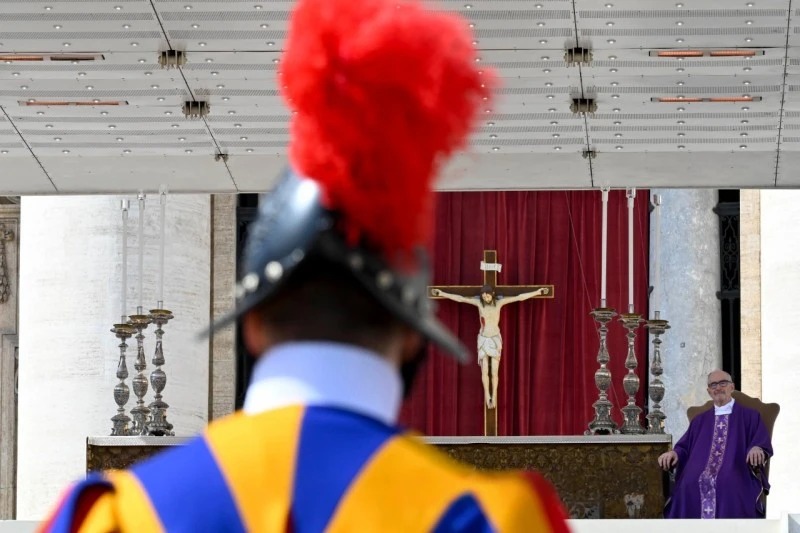
“The Lord is with us and takes care of us, especially in the place of trial”
Exaudi Staff
09 March, 2025
8 min
 (EN)
(EN)
 (ES)
(ES)
 (IT)
(IT)

